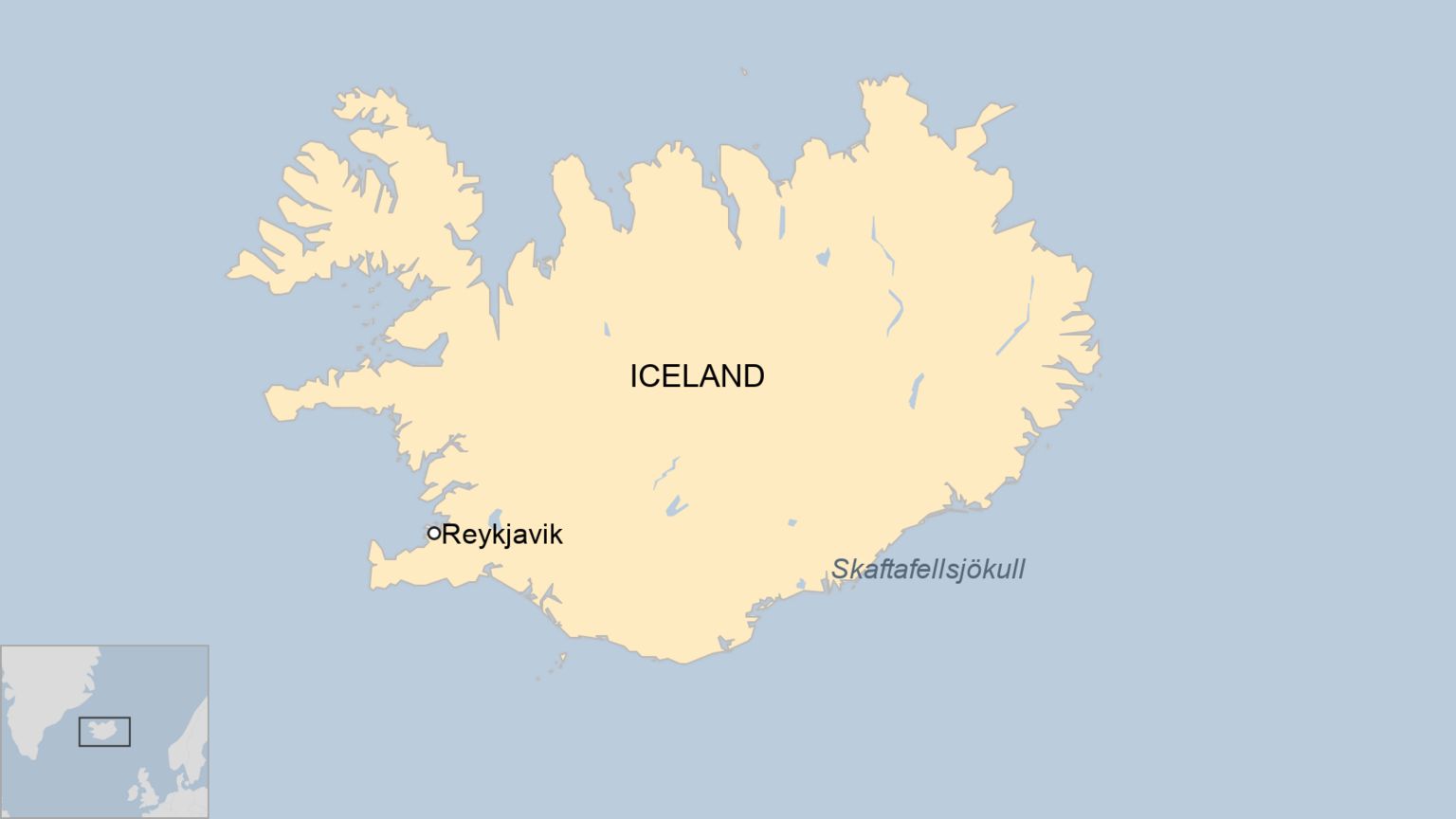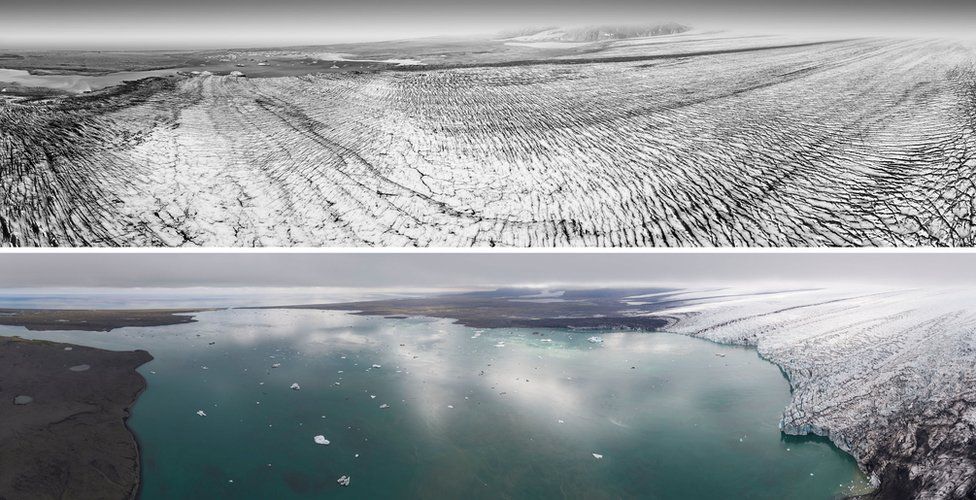Iceland’s Skaftafellsjokull is a spur from the nation’s Vatnajokull ice cap, which is Europe’s largest glacier.
In 1989, photographer Colin Baxter visited the glacier during a family holiday and took a picture of the frozen landscape.
Colin’s son, Dr Kieran Baxter, returned to the exact location 30 years later.
It had dramatically retreated, with scientists estimating it had shrunk by about 400 square kilometres, which is about the size of the Isle of Wight, as a result of climate change.
“I grew up visiting these amazing places and inherited an understanding of the quiet power of these landscapes,” said Dr Kieran Baxter, a lecturer at the University of Dundee.
“It is personally devastating to see them change so drastically in the past few decades.
“On surface appearances, the extent of the climate crisis often remains largely invisible but here we can see clearly the gravity of the situation that is affecting the entire globe,” Dr Baxter observed.

image copyrightAlice Watterson
Globally, the world’s glaciers are considered to be among the most visual indicators of how the world’s climate is warming.
According to US scientists, glaciers have – on average – lost the equivalent of a 24m-slice of ice since 1980.
Measuring the actual decline of glaciers is difficult on a global scale as there are a range of factors that affect the rate of melting, such as altitude, precipitation, exposure to the elements, like wind and sunlight.

Glaciers’ ages also differ vastly. Some are just a few centuries old, whereas other have been in existence for hundreds of thousands of years.
The longevity of glaciers provide a valuable record of past climates, and how the current situation compares with past events.

image copyrightNational Land Survey of Iceland/Kieran Baxter
Scientists drill into the glaciers’ ice and extract a “core”. These cores provide a continuous “proxy” year-by-year record of past climates.
By analysing components of the ice, such as trapped air bubbles within the ice, researchers can build up a picture of past atmospheric characteristics, such as how much CO2 was in the air, temperature variations, vegetation.
This allows scientists to build up a picture of past climates, how it has changed and what we can expect in the future.
The demise of glaciers around the world serves as a double whammy. Not only are regions losing vital sources of drinking water, and irrigation for agriculture, but the world is losing forever a valuable scientific history of the planet’s climates.
Our Planet Now & Then is a monthly feature that shows how our planet is changing in a warming world, running until the UN’s climate summit in Glasgow in December
Read MoreFeedzy




